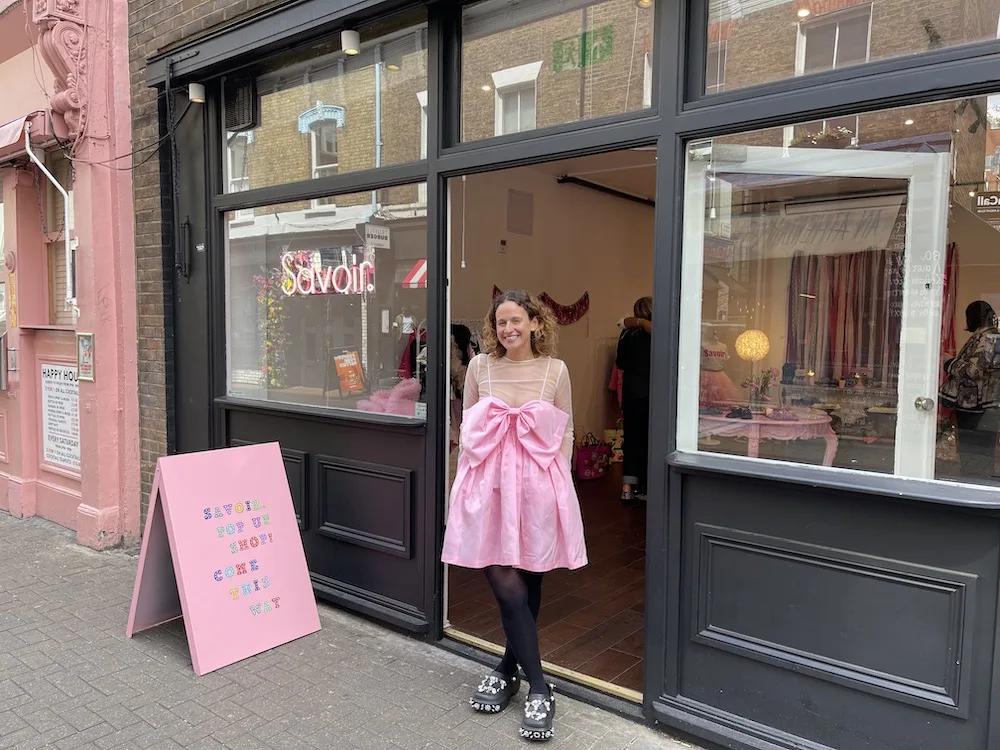Historically a fishing village, Cascais became the epitome of chic when the Portuguese royal family started to holiday here at the end of the 19th century. Other European royals, such as Britain’s own King Edward VIII, favoured it too. Where the royals go, the upper classes follow, and soon the stretch of coastline west of Lisbon was the preferred destination for the affluent elite of Europe, from Lord Byron to Grace Kelly.
With or without royals and celebrities, this part of the world is magnificent. Miles of golden sand beaches, crystal-clear ocean, stunning nature, fabulous food and a rich historic and cultural heritage can be seen, felt and tasted everywhere you go.
For this trip, I based myself at the InterContinental Cascais-Estoril. With an enviable location between the bays of Estoril and Cascais, and unparalleled views of the Atlantic Ocean, this stylish boutique hotel sums up the spirit of the sophisticated Portuguese Riviera.

The InterContinental Cascais-Estoril enjoys a privileged location between Estoril and Cascais, with unparalleled views of the Atlantic Ocean.
There was far too much to see and do to cover it all in just a long weekend, so I had to choose just a few gems. First, culture: Cascais is the hometown of Paula Rego, possibly the most influential Portuguese-born female artist of the 20th century. She commissioned award-winning architect Eduardo Souto de Moura to design the building that houses her art – Casa das Histórias Paula Rego. A self-confessed anglophile, Rego spent a large part of her life in the UK. She studied at the Slade School of Fine Art and was an exhibiting member of The London Group, along with David Hockney and Frank Auerbach. Over her career as an artist, her work evolved from abstract to figurative, although she may be best known for her paintings and prints based on storybooks – particularly the 1992 edition of Peter Pan by The Folio Society.


Left: Casa das Histórias, Paul Rego’s museum designed by architect Eduardo Souto de Moura. Right: “Histórias de todos os dias” (Everyday tales), the room devoted to Rego’s work in the 1970s.
Cascais has an area known as the Art District, where most of its museums are located and where visitors can quickly and easily stroll between architectural treasures. After the visit to Casa das Histórias Paula Rego, I crossed the street to visit Marechal Carmona Park, where the Palácio dos Condes de Castro Guimarães is located. Originally known as Torre de São Sebastião, the tower, built in 1900, is a classic example of what was once called “summer architecture,” and its eclectic character makes visitors feel as if they are stepping into a fantasy 19th-century microcosmos. The museum is home to an equally eclectic collection of paintings, furniture, jewellery and even porcelain.


Palácio dos Condes de Castro Guimarães, was built by Jorge O’Neil, a Portuguese aristocrat of distant Irish descent, who also instructed the construction of the nearby Casa de Santa Maria.
My next stop was Casa de Santa Maria, literally two minutes away. This 19th-century stately home was once the most luxurious private residence in Cascais, home to an Irish businessman who had made his fortune in the tobacco trade. Erected in 1902 by the titular and official head of the Clanaboy O’Neil dynasty, Jorge Maria O’Neil (also responsible for the Palácio dos Condes de Castro Guimarães), the home was designed in the Mediterranean style, with a strong Moorish influence. Architect Raul Lino cleverly made the building look as if it emerged naturally from the landscape.

Casa de Santa Maria was commissioned by Jorge O’Neil as a wedding present for his daughter.
From Casa de Santa Maria, I strolled along the seafront promenade with a small detour to visit Santini, probably the best ice-cream artisans in Portugal. There are many flavours you’ll not find anywhere else – but of the well-known ones, I recommend pistachio. It is out of this world.
Back at the InterContinental, I allowed myself a bit of time to thoroughly explore and enjoy my room; it was very generously sized and had a spectacular balcony overlooking the majestic Atlantic. I couldn’t help but order a cheeky G&T while watching the sun disappear below the horizon. Cascais is almost the westernmost point of Continental Europe, but not quite. Cabo de Roca – just a few miles up the coast, in Sintra – takes that badge. Still, not bad.

Junior Suite at InterContinental Cascais-Estoril, a 57sqm space with a private balcony overlooking the Atlantic Ocean.
Deciding where to dine in Cascais proved difficult; the town is bursting at the seams with restaurants. From modest chiringuitos on the seafront to sophisticated establishments such as the Michelin-starred Fortaleza do Guincho, there’s amazing food everywhere. Wherever you choose, chances are you’ll eat well. But remember that Cascais lived off the sea for centuries, and it is still an important source of income for the local economy. So there’s no way you should leave without eating your body weight in seafood. The octopus is particularly good, which is probably why it’s the most famous dish in the area. I was told by a local fisherman who supplies a few of the places on the promenade that they still fish for octopus following traditional methods – and at night, because that’s the best time to catch cephalopods.


Wherever you go in Cascais you’ll find delicious seafood dishes, mostly put together with the catch brought by the local fishermen in the early hours.
With all the delicious food, a visit to the hotel’s gym was compulsory – not least because breakfast at the InterContinental is irresistible. It takes place at Bago du Vin, the hotel’s restaurant, which is basically a terrace with panoramic views of the ocean. Pure luxury. I love the fact that it is open more or less all day; so it doesn’t matter what time you turn up, they’ll feed you as if you were royalty. The service is impeccable, the kind you only get in true five-star hotels (the real ones – you know what I mean).
With a guilt-free conscience thanks to my pre-breakfast discipline, I was ready to explore more of this exquisite little town. Although taxis and private car companies such as Uber are aplenty, Cascais is worth exploring more slowly – ideally by bicycle. There are plenty of rental places and lots of electric ones too, just an app download away. Happily riding one of them, I pedalled my way to Fortaleza Nossa Senhora da Luz de Cascais, back in the Art District. The complex, built between the 15th and 17th centuries, consists of a fort and a palace (now a museum) where the royal family often spent the early autumn. In its glory days, the citadel was used to defend the coastline and River Tagus estuary, thus protecting the capital, Lisbon.

Boca do Inferno is a unique cliff formation to the northwest of Cascais, one of the most beautiful location to see the sun slowly come down at the end of the day.
The day before, I had regretted not bringing my swimsuit and beach towel with me – a mistake I didn’t repeat. Santa Marta beach is just a few minutes away, opposite Casa de Santa Maria, with the Palácio dos Condes de Castro Guimarães behind. The water is crystal clear, and its surroundings make it one of the most photographed locations in Cascais.
Another Insta fave is the viewpoint known as Boca do Inferno, along the coast on the way to Praia do Guincho (Guincho Beach). Boca do Inferno is a unique formation created by the erosion of the limestone cliffs by both the force of the waves and the slightly acidic rainwater. When there’s a serious storm, the echo effect of the roaring waves and the water erupting upwards as it hits the cliffs makes the whole spectacle quite haunting. Sunset here is pure magic. Sky and ocean turn a million different shades: first yellows, oranges and reds as the sun makes his way down to the horizon line, and after it disappears, purples and even greens provide the last of the daylight before the night sky fills with stars and the ocean with the tiny lights of fishing boats.
If you get there with a bit of time, it is worth visiting the Mercadinho, a market known for its woolly jumpers, all kinds of sheepskin products and a wide range of local crafts.



In Maré, the famous Portuguese chef José Avillez, goes back to basics with the freshest fish and seafood in the region.
My dinner destination was a few minutes’ walk from Farol da Guia (probably the oldest active lighthouse in Portugal): Maré, by renowned Portuguese chef José Avillez. With its panoramic views of the ocean, the setting could not be better. Nor could the food. Avillez is convinced that Portugal has the best seafood in the world, and his restaurant is set to prove it. Whether you go for the raw-bar specialties, such as marinated meagre with red onion and avocado, cooked dishes such as scarlet prawns with crab and clams, or any of the charcoal-grilled seafood and fish options, you are likely to leave sharing his view.
On my last day, I took it easy. Before going to Praia da Duquesa for a last swim in the Atlantic (the water was unusually warm), I treated myself to a one-hour Deep Tissue Intense Relief massage at Spa InterContinental by L’Occitane. The massage combines Lomi Lomi deep pressure, acupressure points and gentle stretching. The name comes from the Hawaiian and Samoan languages, and means “to knead.” The therapist uses smooth, flowing strokes that mimic the ocean waves. The effect is deeply relaxing; as a result, I came out feeling not only super-chill but also refreshed.

The Deep Tissue Intense Relief massage at Spa InterContinental by L’Occitane combines Polinesian inspired stroke with acupressure points and stretching.
For such a boutique-sized town, Cascais definitely packs a punch. Whether your thing is art, architecture, shopping, gastronomy or simply getting lost in a maze of postcard-pretty cobbled streets, this is a destination that, if you visit once, you’ll find yourself returning time and again.
More information about the InterContinental Cascais-Estoril, HERE.
More information about Cascais, HERE.
Words: Julia Pasarón
Opening picture: © visitcascais

















Show Comments +